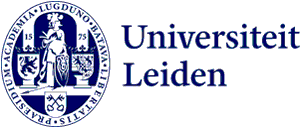
Awaken sleeping antibiotics with ERC Advanced grant
To facilitate the search for new antibiotics. That is the aim of Gilles van Wezel, professor molecular biotechnology at the Institute of Biology Leiden (IBL). He wants to do this by looking at similarities in the DNA of antibiotic-producing bacteria. Van Wezel has been awarded an ERC Advanced grant for this research project. He receives 2.5 million euros.

Bacteria are increasingly resistant to existing antibiotics, while fewer new antibiotics are developed. ‘A major social problem,’ says Van Wezel. ‘I want to add a new dimension to the exploration, so we can look for new medicine more accurately.’
The original method is outdated
Van Wezel’s lab works with streptomycetes, a group of bacteria that is responsible for two-thirds of the current antibiotics. The antibiotics are derived from natural products that the bacteria excrete in the lab. However, there is a problem: Researchers have repeated this method so many times, that they hardly find new natural products anymore.
Bring nature into the lab
Nevertheless, there are still many interesting natural products to be discovered in streptomycetes. ‘But these only appear when the bacterium receives a certain signal from its surroundings,’ Van Wezel explains. These can be factors in nature: drought, the presence of competitors such as fungi or bacteria, or a hormone from a plant with which the streptomycete lives. However, it does not receive these signals in the lab. For now, the signals are thus unknown, but if we find them we could wake up the hidden, ‘sleeping’ antibiotics.’
‘The bacterium only makes certain natural products after it receives a signal.’
Marnix Medema, researcher at Wageningen University and partly appointed at IBL, developed software to look for interesting pieces of DNA in all kinds of streptomycetes. Van Wezel gets to work with this data. ‘We now see information for more than a million natural substances. How do researchers know where to start? That is where the project is really going to make a difference.’
Similarities in DNA
Van Wezel not only wants to discover the signals, he also wants to know how those signals are received and ultimately how they turn on the molecular switch. He wants to make those switches visible in the DNA. He investigates this together with professor Jos Raaijmakers of NIOO-KNAW. Van Wezel himself is also an honorary fellow there. Together, they show that plants can directly control the production of bioactive substances by streptomycetes, and thus influence the switches.
The Joint Genome Initiative in Berkeley, USA, will help to map out all these switches, by making an overview of the model organism Streptomyces coelicolor. In this way, they hope to be able to predict what you need to do to trigger antibiotics. Additionally, a large part of the investigated DNA is also preserved in other streptomycetes. And so, there too, you can predict what you need to do to wake up a particular antibiotic.
Science for everyone
‘We do the analyses and predictions, and immediately make these data available for everyone,’ says Van Wezel, who called this research project COMMUNITY for this reason as well. ‘It is not just about the surroundings in which streptomycetes live in nature, but also about the cooperation with the scientific community. We will immediately make our results open access. That results in freer research and hopefully more collaboration.’
‘Open access results in freer research.’
The results Van Wezel hopes to find are only the first step in drug development. ‘My research will help other researchers to make choices in the vast amount of information, to select several candidates in the millions of interesting DNA clusters. They can then elaborate and develop this further.’
Worldwide happiness
‘I think that this project will help a lot of young people in their research,’ says an excited Van Wezel. ‘Instead of spending four years analysing natural substances at random, they can now look specifically at which pieces of DNA are most relevant for their research. I see this ERC Advanced grant as an enormous recognition because it is probably the most competitive grant in Europe. But however nice it is, above all I hope for valuable discoveries. I think that COMMUNITY will give happiness to many people worldwide.’
